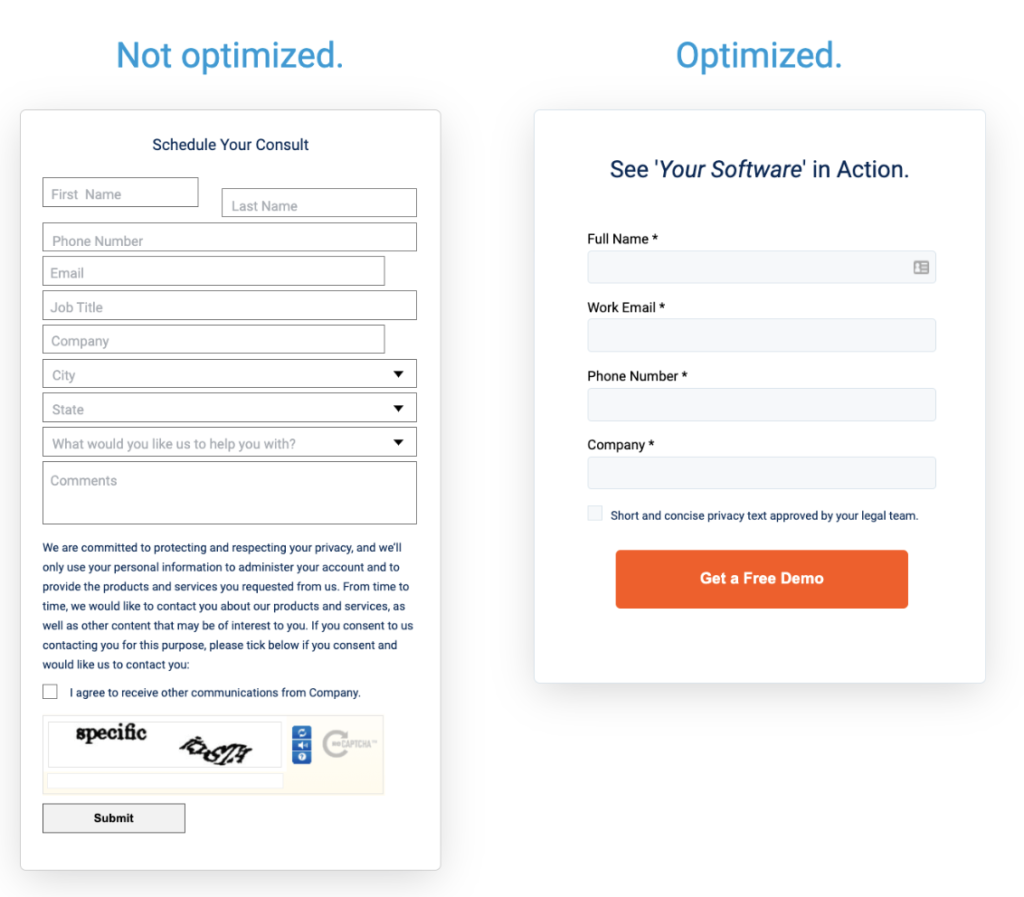Filters
Content Type
Topic
Pros and Cons of Gated Content in 2024
Planning an open house party versus an invite-only party is vastly different. If you’re hosting an open house, you have no idea who might show up or how many people to expect. This can lead to creating too much or too little food, not considering specific diets, and not knowing what entertainment people would enjoy.
Invite-only parties allow you to personalize the menu, activities, and events around those guests.
Lead generation allows you to throw an invite-only party for your leads. In other words, you can personalize your strategies to the leads because you know who they are, rather than marketing to a broad audience of nameless viewers.
That personalization is what will increase your chances of converting those leads.
But before you can send out that exclusive content, you must first identify your leads. Gated content remains an effective method with the right modern tools to upgrade your strategy.

What Is Gated Content?
Gated content is any digital asset you place behind a contact form. Anyone who wants to access that content must input their information in exchange for the download.
Gated content includes:
- eBooks
- Whitepapers
- Webinars
- Product demos
- Courses
- Templates
- Infographics
For gated content to be effective, the digital asset should offer the reader value. The value has to be high enough that readers are willing to exchange personal information for that content.
For example, an ad for your products would not be a practical digital download. But an infographic showing how your product solves a pain point might tempt someone to download it.
Some businesses will offer additional incentives, such as entry into a giveaway, a gift, and a download.
The contact form then imports that lead’s information directly into your database, where you can begin nurturing that lead with personalized content.
Gated vs. Ungated Content Debate
Gated content has been a topic of debate among marketers. Some love it, while others say it’s highly ineffective. Here are the primary arguments for and against gated content.
Pros of Gated Content
Gated content has several benefits, including:
- Lead Generation: Gated content allows you to collect lead information to contact them with personalized nurturing content. This differs from blog posts and other forms of content where readers engage with the content and then leave, giving you no way to follow up with those readers and draw them back.
- Audience Segmentation: Gated content provides more data than contact forms on their own. You can learn about contacts from the information they input, the content they download, and other content they engage with. This helps you segment that audience by who they are and what information they are most interested in for a hyper-personalized strategy.
- Data Collection: You can customize your contact forms based on the data you would find most useful. This might include interests, preferences, and demographics.
- Quality Leads: Because leads are willing to exchange their information for the content, they are often more interested in your business and products. This helps you capture higher-quality leads. You can also use the data you collect to qualify the lead.
Cons of Gated Content
While gated content has many benefits, it can also come with a unique set of challenges.
- Lost Leads: Because you place content behind a long form, there’s a chance you will miss out on connecting with leads who don’t want to fill out the form even though they might be potential customers. With the internet putting information at everyone’s fingertips, readers may look for that information somewhere more accessible.
- Poor User Experience: Having forms interrupting the reading experience can lead to a negative user experience, especially lengthy and intrusive forms. Users often look at several assets, not just one. However, filling out a form for each new asset can deter them from continuing.
- Negative SEO Impact: Gated content is often not indexed by search engines, so it may not contribute to your discoverability and organic traffic.
- Lost Trust: Readers may not trust the business enough to provide all the detailed information requested in the form. This can cause a negative experience and impact their trust in your business.
How to Win at Gated Content with Hushly
Hushly offers a solution combining gated content’s benefits with a seamless user experience. Our microforms provide the best of both worlds, giving your gated content strategy an update to remain effective in a society that prizes instant access to information.
By using Hushly’s gated content tool, you can beat the system. You’ll collect more data while removing barriers to connecting with your content. This results in happier leads, which you can target with hyper-personalized content.
Microforms to Streamline the Gated Content Process
Hushly uses a unique microform instead of the traditional lengthy, intrusive forms for lead generation. The ideal form has three to five fields to maximize conversion. However, these microforms can even go as low as two to three form fields, making filling them out as seamless as possible.
Because the form doesn’t require detailed information, more readers will be willing to fill it out. It will take a fraction of the time and won’t feel as invasive as those forms asking for personal details.

Image from Gartner
First-Party Data Collection
Data collection occurs behind the scenes with Hushly’s gated content tool. The microform collects names and emails, but AI works in the background to fill in the details.
That data is far more valuable than what you might find on a lengthy form. It includes the user’s browsing habits and interests, allowing you to segment and personalize your nurturing strategy for that lead.
Multi-Asset Browsing for Uninterrupted Reading
While Hushly’s tool may request readers fill out a form once, it is only a one-time deal. Once someone fills out that form, they are good to go. There will be no more forms popping up and interrupting their browsing experience.
This improves the customer experience, allowing them to interact with more content during their session. It’s like unlocking a door to a content warehouse versus unlocking one door only to be faced with dozens of additional doors.
By providing unlimited access to content after filling out a form once, you encourage the reader to stay on your site longer. The longer they stay on your site and interact with content, the more data you will collect about that lead without repeatedly interrupting their browsing experience.
Text-First Experiences to Boost Search Engine Ranking
Hushly promotes the concept of greeting readers with texts, not forms. In fact, most of our gated content allows readers to engage with the content before deciding whether they will fill out a form to download it.
We also encourage including information on the page where readers can access the content. By unlocking part of the content and sharing details on the page, you can benefit from the content’s search engine ranking while still generating leads.
Experience the Best of Both Worlds with Hushly’s Gated Content Tool
Gated content doesn’t have to be an all-or-nothing strategy. Hushly’s innovative technology has updated this lead generation method to remain relevant in today’s instant gratification society. You can continue generating quality leads, while our tools provide access to even more data than ever.
Book a demo to see the many benefits of Hushly’s gated content tool.
The post Pros and Cons of Gated Content in 2024 appeared first on Hushly.



